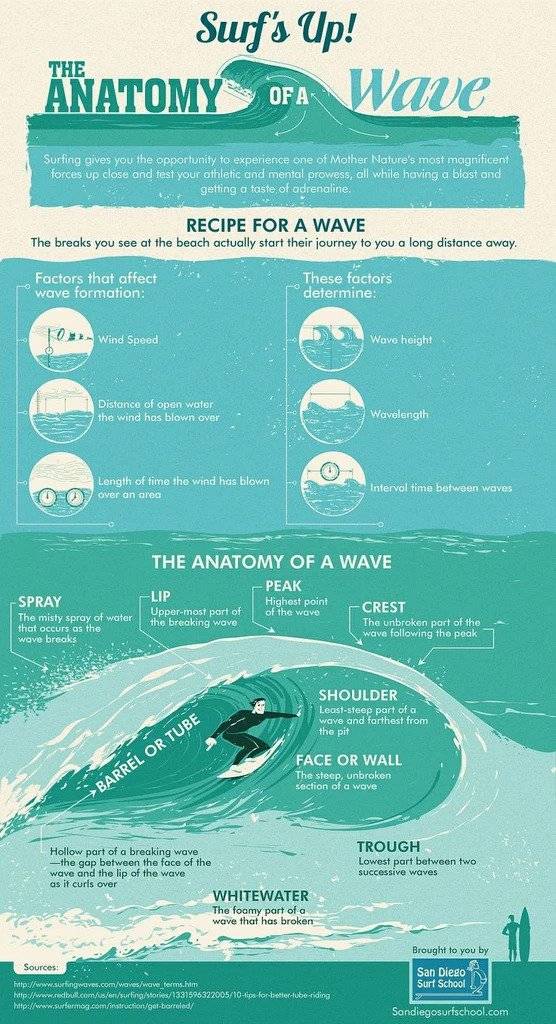Surfing gives you the opportunity to experience one of mother natures most magnificent forces up close and test your athletic and mental prowess, all while having a blast and getting a taste of adrenaline. The breaks you see at the beach actually start their journey to you a long distance away. Factors that affect wave formation: Wind Speed, Distance of open water the wind has blown over, Length of time the wind has blown over an area These factors determine: Wave height, wavelength, interval time between waves The anatomy of a wave: Spray:the misty spray of water that occurs as the wave breaks Lip:Upper-most part of the breaking wave Peak: Highest point of the wave Crest: The unbroken part of the wave following the peak Shoulder: Least-steep part of a wave and farthest from the pit Face or Wall: The steep, unbroken section of a wave Barrel or Tube: Hollow part of a breaking wave, the gap between the face of the wave and the lip of the wave as it curls over Whitewater: The foamy part of a wave that has broken Trough: Lowest part between two successive waves
















